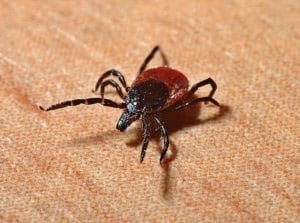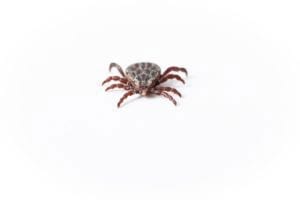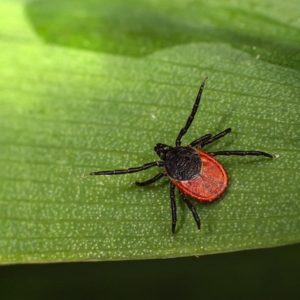Lyme Disease
What is Lyme disease?
Lyme disease is a vector-borne disease that is typically caused by the bacteria Borrelia burgdorferi and spread by ticks. About 30,000 cases of Lyme disease are reported to the CDC annually, but not all cases are reported. The actual number of cases is most likely higher.
What are the symptoms of Lyme disease?
Symptoms come in stages, so they differ depending on how long one has had the disease. Early symptoms include fever, chills, headaches, fatigue, aches in the muscles and joints, swollen lymph nodes, and erythema migrans rash. This rash forms at the site of the tick bite. These symptoms will occur three to 30 days after infection.
Later effects begin to appear days or months after the bite. They include severe headaches, neck stiffness, additional rashes, facial palsy, arthritis, severe joint pain and swelling, intermittent pain in the tendons, muscles, joints, and bones, an irregular heart beat, dizziness, shortness of breath, inflammation in the brain and spinal cord, nerve pain, and shooting pains, numbness, and tingling.
What causes Lyme disease?
A bacteria is responsible for Lyme disease, and it is called Borrelia burgdorferi. Infected deer ticks transmit the disease throughout the northeastern, mid-Atlantic, and north-central portions of the United States, while the western blacklegged tick spreads the disease on the Pacific coast.
How is Lyme disease diagnosed?
Medical professionals will look for the characteristic symptoms, ask about exposure to ticks, rule out other conditions, and conduct lab tests. A two-step process is necessary for lab tests, and both steps can be completed through a blood test. Both steps must be positive in order to confirm a Lyme disease diagnosis.
What are the treatments for Lyme disease?
Rapid diagnosis is important, as antibiotics can quickly and completely cure the disease during its early stages. Doctors may prescribe doxycycline, amoxicillin, or cefuroxime axetil. These antibiotics are typically enough to cure the disease, but at times people develop post-treatment Lyme disease syndrome, which is when symptoms last more than six months after completing treatment.
Preventing tick bites and removing ticks quickly and completely are also important to stop the transmission of Lyme disease.
Where can I find out more about Lyme disease?
Lyme Disease Articles

A Genetic Analysis of Bacteria Strains Causing Lyme Disease Could Transform Treatment

Study of the Week: Protein from Sweat is Protective Against Lyme Disease

This Protein from Sweat Could Offer Protection from Lyme Disease




Study of the Week: A Possible Method for Improving Lyme Disease Diagnosis




